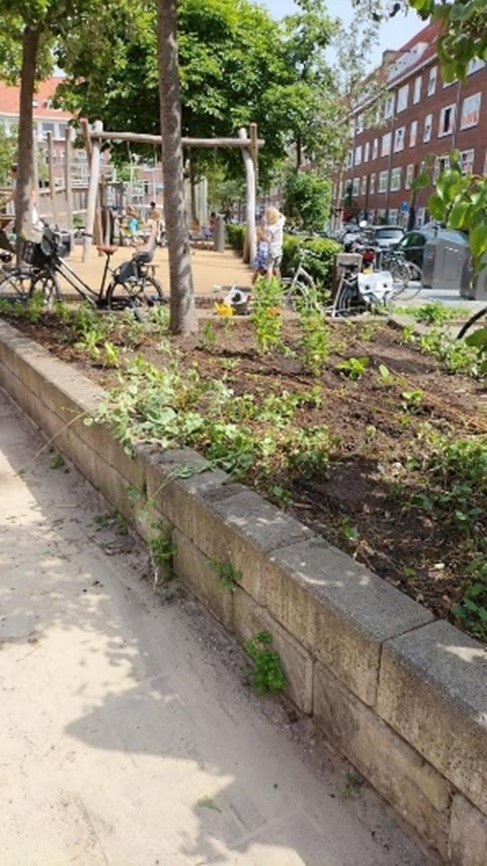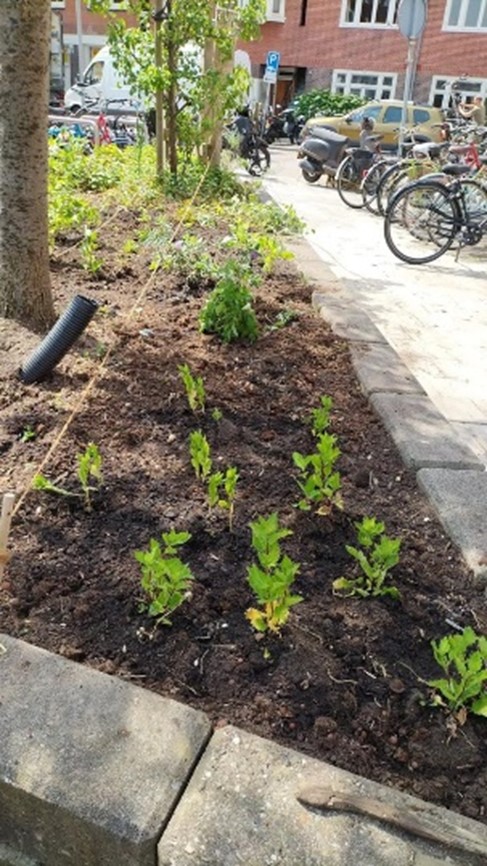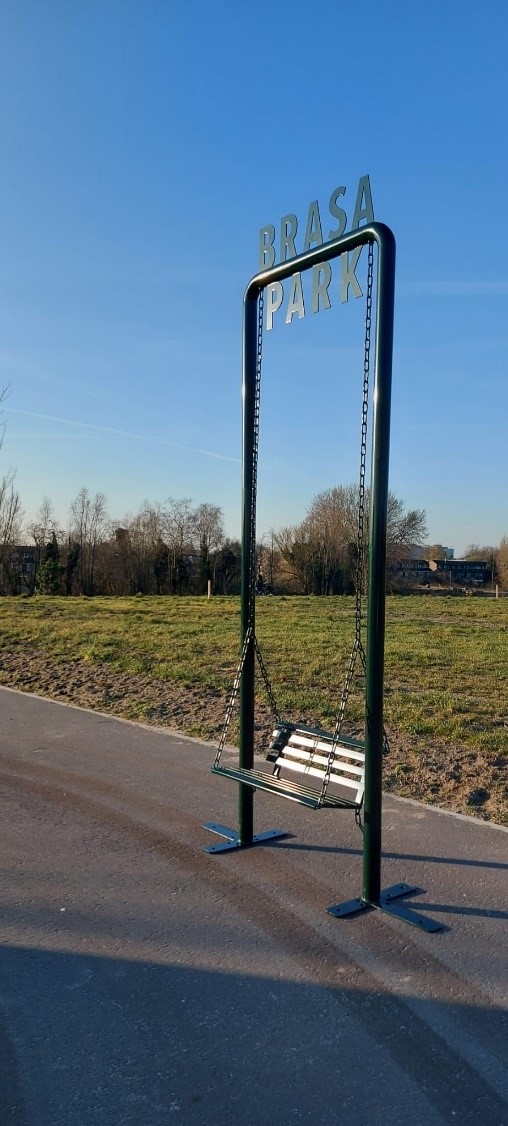[urban interfaces] Blogs
Guest blogpost: Joosje Holstein – On Critical Park Making
For our [urban interfaces] seminar series on the theme Creative Urban Methods (year 2022-2023), we invited participants to write blogposts. The best and most interesting ones we publish on our website.
Below is the blogpost for seminar session #1, written by Joosje Holstein:
My name is Joosje Holstein, I study Comparative Literary Studies, and I am fascinated by the idea of ‘reading the city’, in the broadest sense. What stories do the trees tell us, isolated green beings in between concrete and brick? How can we academically interpret urban spatial experience? What is the effect of mapping out visually the urban spaces inside a book? How can we intervene creatively in the city and why would we? The city is like a red thread through my academic path up until now: the first course I ever took was called “Cities and Cultures”, and in the meantime I have written about e.g. urban soundscapes and the mnemonic layers of cities. For my final RMA thesis I am planning to write about the city of Rome, and show by using actor-network-theory how some novels resonate with each other in the way they represent certain (postcolonial, posthuman) urban elements in order to deconstruct the myth of Rome as the Eternal City.
On Critical Park Making
By Joosje Holstein
My name is Joosje Holstein, I study Comparative Literary Studies, and I am fascinated by the idea of ‘reading the city’, in the broadest sense. What stories do the trees tell us, isolated green beings in between concrete and brick? How can we academically interpret urban spatial experience? What is the effect of mapping out visually the urban spaces inside a book? How can we intervene creatively in the city and why would we? The city is like a red thread through my academic path up until now: the first course I ever took was called “Cities and Cultures”, and in the meantime I have written about e.g. urban soundscapes and the mnemonic layers of cities. For my final RMA thesis I am planning to write about the city of Rome, and show by using actor-network-theory how some novels resonate with each other in the way they represent certain (postcolonial, posthuman) urban elements in order to deconstruct the myth of Rome as the Eternal City.
I grew up in a multicultural neighborhood of Amsterdam with broad sidewalks. One day when I was walking next to my mother – looking down in order not to touch the lines with my feet – I suddenly noticed the mosaic tiles that had appeared like mushrooms: while yesterday the sidewalk was still a sea of grey, now every few meters there was a colorful tile in between the dirty grey tiles. I asked my mom: what are these? “They are probably made by the children of the neighborhood!” I remember having so many questions. When did they make this, where, and why was I not there? But, above all: to whom does the pavement actually belong, if children are allowed to take away grey tiles and add mosaic ones? In my mind, the pavement changed from a space of no-one in particular, or a space from the municipality, towards a space of everybody.
On the broad sidewalks there were also trees. Their ‘tree-mirrors’ had little well-maintained gardens with little signs with shitting dogs painted on them behind a big red cross. ‘Tree-mirrors’ is a literal translation from Dutch, by the way, because lately I had a conversation with an ecology research master student who was studying these tiny gardens at the roots of city trees, and she came to the conclusion that the only language having a word for them is Dutch. I wonder what that says about our culture. At some point, when I was older, my dad started a ‘neighborhood-initiative’, to take care of the tree-mirrors together with the neighbors; he was very fanatic about it although he was often gardening entirely alone, because nobody showed up.


My dad was always eager to talk about his job at the dinner table, so ‘buurtparticipatie’ – neighborhood participation – must have been one of the first words I learned as a kid. He worked as a project manager for the municipality of Amsterdam Geuzenveld-Slotermeer, then Nieuw-West, then just Amsterdam. In all of his projects, whether being about traffic and spatial planning, or urban climate adaptation, neighborhood participation was a central concept. Again, I remember my questions: how could something as big and anonymous as the public space be influenced by mere neighbors? I wondered in simpler, less fancy words of course.
Lately, my father has been the project manager of a new park in Amsterdam: the Brasapark in the neighborhood of Zuid-Oost. It is a park on top of a highway tunnel, which arose from a compromise between the municipality and the national government. As I still have many questions, and he is still eager to talk about his work, the past years have been filled with conversations about this project in which, again, neighbor participation is key. I decided to write this blogpost about that park, although my positionality is of course a very peculiar outsider’s perspective. My writings are based on conversations with my dad who has this park under his wing, and is in dialogue with three texts – given to me by the Urban Interfaces: Creative Urban Methods seminar – that are concerned with urban critical making: “Critical Making and Interdisciplinary Learning: Making as a Bridge between Art, Science, Engineering and Social Interventions” by Matt Ratto and Garnet Hertz; “Radical Inclusion? Locating Accountability in Technical DIY” by Christina Dunbar-Hester; and “Unsettling individualized design: practice through collaboration” by Anja Groten.

PARK MAKING: A CRITICAL PRACTICE?
Parks are particular urban spaces; they require a different kind of attention than the rest of the brick and concrete city. Many different life forms come together there, and time seems to function differently, be slower of nature. Parks are often at the heart of the city, and function as such: a multifunctional space of recreation, festivities, relaxation, simply: a space where paths cross, where people come together. Although the Brasapark is found at the outskirts of the city, it is designed to have a similar function. Not the heart of the city, perhaps, but the heart of the neighborhood. To achieve this, not just material design is needed: what makes a park a park are those gatherings, not just the grass on which they happen. Because of this, the Brasapark has engaged from the get go with a process that was named ‘parkmaken’: park making. The idea was that the municipality and the neighbors made the park together, so that the whole neighborhood felt a sense of ‘ownership’ over the park. In order to achieve this, thorough processes of, again, neighbor participation took place, and everybody was welcome to share their dreams and desires for the beautiful green space to come. Urban agriculture, a skate lane, a green playground: they are all being realized at the moment.
All of this resonates very much with the term of ‘critical making’, explained by Ratto and Hertz as “design-oriented practices and pedagogies that include both conceptual and technical work” (18) and in which “critical analysis and material making” (18) come together. The concept of ‘park making’ also encompasses both the material and the conceptual, as I have explained above. To what extent is it a critical practice, though? Perhaps the critical lays in the critical attention that is paid to social structures additionally to the technicalities of making a park. This requires interdisciplinarity, as is also emphasized by the authors of the article (20).
WHO WANTS TO PARTICIPATE?
Needless to say, paying attention to inclusivity is crucial in park making, especially in such a culturally diverse neighborhood that is Zuid-Oost. Park making is a process of listening and continuous reinvention. Eventually, some cultural platforms like Pakhuis de Zwijger hosted park making sessions where everybody was welcome to share their ideas. Gebiedsmakelaars (neighborhood brokers) who knew many people in the neighborhood and were involved in neighborhood projects had the agency to be part of the making of the park, and tried to reach as many neighbors as possible. These are just some examples of how the park making process tried to be inclusive.
But idealistic projects in search of inclusivity can go too far. The text of Dunbar-Hester talks about a group of activists that go to underprivileged neighborhoods in the US to do projects of DIY technology in order to give people there “maker agency” (77). The hope of the activists, was to give people agency and empowerment over the technology in their lives, making them independent of the often lacking facilities provided by the government. Problems arose, however, because did these neighbors actually ask for this group of activists who came into their space in order to empower them?
In order to avoid a similar situation, attention should be paid, I think, to the question of the host. Groten proposes the idea of the designer (or other type of person with the required technical knowledge) as a host: “the designer host acknowledges and negotiates complexities and dilemmas of design processes such as power dynamics, contestation, unresolved conflicts, and contradictions that speak to embodied and tacit knowledge” (117). In a project that takes a spatial urban form like the DIY technology project or the Brasapark, however, asking first who is actually the host is important: the experts, or the neighborhood? Then, if the experts host a process of park making, humbleness is required, because at the same time they are guests hosted in a neighborhood. From this humbleness, they should not ask: is everybody participating? But: who wants to participate?
DESIGNING THE CITY: EMBRACING THE TENSIONS
In the actual process of designing something like a park, the question will arise: when do we move from the conceptual to the practical? This became clear for me after a conversation I had with my dad last week. He told me he found some difficulties in how the artists that are invited to make artworks for in the park approach their assignment. They are jumping to the material level way too quickly, he told me, while it would be great if there would be something like a deepening investigation before they present their concrete ideas. In sum, for my father they were moving too quickly from the conceptual towards the practical level. One problem that arises from this, is that these artists tend to take the concept of the diversity of the neighborhood and deal with it in slightly predictable ways. It is easy to take the idea of ‘we are all diverse but one’ and make an artwork out of it that will shock no one.
But what if in doing so we only scratch the surface of diversity? In essence, all design (or art, I would add) is about exclusion and inclusion, argues Groten (113). It is only in attending to the tensions that arise from this fact, that we can truly do diversity justice. And perhaps the only way to reach this, is to linger in critique for a while, before jumping to conclusions, in a process oriented, instead of product oriented way. Referring to Felski’s understanding of the concept, Groten writes that critique is “a state of suspicion, which springs from a lack of knowledge” (115). Sitting together, then, in this suspicious agonistic space, in which cultural, social and political tensions are embraced, is perhaps the only way to do justice to the name of the park, Brasa, which in Papiamentu means embrace.
WORKS CITED
Dunbar-Hester, Christina. “Radical Inclusion? Locating Accountability in Technical DIY.” DIY Citizenship: Critical Making and Social Media, edited by Matt Ratto and Megan Boler, The MIT Press, 2014, pp. 75-88.
Groten, Anja. “Unsettling individualized design: practice through collaboration.” Critical by Design? Genealogies, Practices, Positions, edited by Claudia Mareis, Moritz Greiner-Petter and Michael Renner, [transcript]design, pp. 112-122.
Ratto, Matt, and Garnet Hertz. “Critical Making and Interdisciplinary Learning: Making as a Bridge between Art, Science, Engineering and Social Interventions.” The Critical Makers Reader: (Un)learning Technology, edited by Loes Bogers and Letizia Chiappini, Amsterdam University of Applied Sciences, 2019, pp. 17-28.

